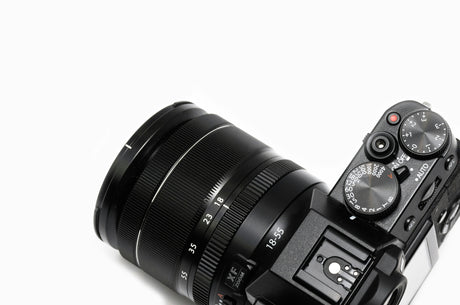Let's go, Ana!
1. Learn the Basics
If you really want to improve the quality of your photos, it's essential to start from the basics. Many people look for quick fixes, but to get truly stunning images, you need to understand how the three pillars of photography work: shutter speed, aperture, and ISO .
Relationship between Shutter Speed, Aperture and ISO
These three factors are the basis of exposure in a photograph. Here's a basic table to help you understand how they affect the image:
| Element | Main Effect | Consequences on the Image |
|---|---|---|
| Shutter speed | Controls the time that light enters the sensor | Freeze motion or create motion blur |
| Aperture (f-stop) | Controls the amount of light passing through the lens | Affects depth of field (focus/blur) |
| ISO | Controls light sensitivity | Increases brightness, but also noise at high sensitivities |
2. Depth of Field
Playing with depth of field is a simple technique that can dramatically improve your photos. For portraits, use a low aperture to blur the background and highlight your subject. For landscapes and architecture, increase the aperture (f5.6–f8) so that both the foreground and background are in sharp focus.
| Scenery | Recommended Opening |
|---|---|
| Portraits | f/2.8 or smaller |
| Landscapes or Architecture | f/5.6 - f/8 |
3. Lighting
Light can transform an ordinary photo into something spectacular. When using natural light, try placing your subject in front of a window or soft light source for best results. The light meter on your camera will help you measure shadows and highlights and balance exposure correctly.
| Lighting Council | Benefit |
|---|---|
| Place the subject in front of a window | Improves contrast and natural lighting |
| Using the light meter to balance shadows and lights | Helps to obtain accurate exposure |
4. Using Flash
When working in low-light conditions, such as in a club or pub, you'll likely need to use a flash. A built-in flash can illuminate the scene, but an external flash will allow you to bounce light off ceilings or walls for softer, more professional lighting.
| Flash Type | Use |
|---|---|
| Built-in flash | Basic direct lighting |
| External flash | Allows light to bounce to create a softer effect |
5. Composition
Composition is key to a visually compelling photograph. Go as wide as possible to include more context in the scene. Another important tip is to keep straight lines , such as the edges of doors, windows, and buildings, so they align with the frame.
Composition Rules:
| Composition Council | Effect on the Image |
|---|---|
| Keep the lines straight | Gives a cleaner, more professional look |
| Include more context in the image | Adds depth and visual interest |
| Use the "Rule of Thirds" | Improves the visual balance of the photo |
6. Photographic Equipment
The equipment you use will have a huge impact on the quality of your photos. For beginners, a great option is a mirrorless camera , which is lighter and more portable than DSLRs, but still offers compatibility with a wide range of lenses, including pre-owned ones.
Advantages of Mirrorless Cameras:
| Mirrorless Camera | Main Advantage |
|---|---|
| Lighter and more compact | Ideal for travel and events |
| Compatible with various lenses | Allows you to use old or second-hand lenses |
Recommendations for Buying Second-Hand Cameras:
- Mirrorless cameras : A great option for beginners. Lightweight and easy to transport.
- Buying used cameras : You save money without sacrificing quality, especially if you buy from a reputable company.
Thank you, Ana, for these essential tips for beginners and students. If you'd like to learn more, visit the Camera Market Student Center for more educational resources.






















